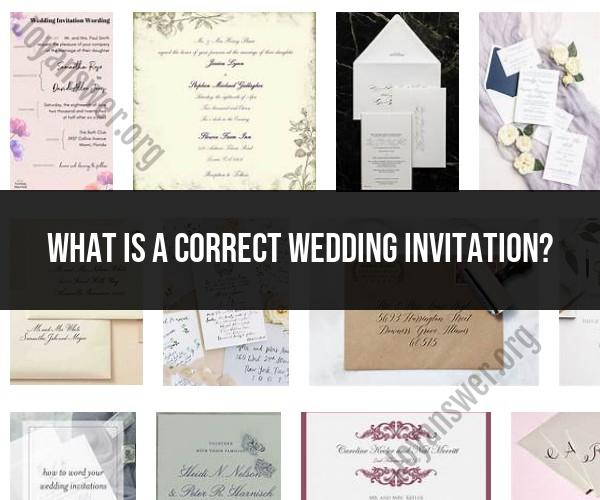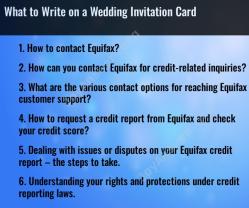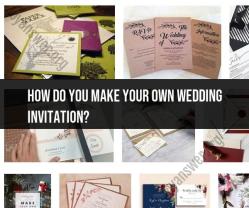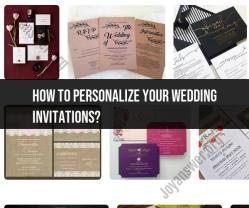What is a correct wedding invitation?
A correct wedding invitation adheres to established etiquette while reflecting the style and preferences of the couple. Here are some key elements of a correct wedding invitation:
Hosts' Names: Traditionally, the invitation begins with the hosts' names. The hosts are typically the ones inviting guests to the wedding. This could be the bride's parents, both sets of parents, the couple themselves, or other family members.
Request Line: Following the hosts' names is a request line that formally invites the guest to the wedding. For example: "Request the honor of your presence at the marriage of..."
Couple's Names: Include the names of the couple getting married. In traditional invitations, the bride's name typically precedes the groom's. For example: "Jane Smith and John Doe."
Date and Time: Clearly state the date and time of the wedding ceremony. Use formal language, such as "Saturday, the fifth of June, two thousand twenty-four, at three o'clock in the afternoon."
Location: Include the name and address of the wedding venue. Spell out the names of streets and cities completely, and use proper titles (e.g., "Saint John's Church" instead of "St. John's Church").
Reception Information: If the reception is at a different location, provide details about the reception venue and time.
Dress Code: If there's a specific dress code, such as "Black Tie," "Casual," or "Beach Formal," include it in the lower right corner of the invitation.
RSVP Information: Clearly indicate how and by when guests should RSVP. Provide a response card with a pre-addressed and stamped envelope for convenience, or include instructions for online RSVPs.
Additional Cards: If needed, include separate cards for details like directions, accommodations, and any other important information.
Envelope: The outer envelope should be addressed formally with the guest's name and address. The inner envelope (if used) can include guest names more informally or include children's names.
Postage: Ensure that there is enough postage on the response card envelope for guests to easily send back their RSVPs.
Design Elements: Choose a design and style that aligns with your wedding theme and personal taste. Consider colors, fonts, and any embellishments that match your wedding aesthetic.
Proofreading: Carefully proofread the invitation to ensure there are no errors in names, dates, or details. It's a good idea to have someone else review it as well.
Ordering Timeline: Start the invitation process well in advance to allow time for design, printing, addressing, and mailing. Wedding invitations are typically sent out 6-8 weeks before the wedding date, with save-the-dates sent earlier for destination weddings or during peak wedding seasons.
Cultural Considerations: Be mindful of any cultural or religious traditions that may influence the wording and design of your invitation.
Keep in mind that while traditional wedding invitation etiquette provides a formal framework, couples have the flexibility to personalize their invitations to reflect their unique personalities and preferences. The key is to communicate important details clearly and respectfully to your guests while setting the tone for your special day.
Etiquette and Elegance: Creating the Correct Wedding Invitation
Your wedding invitation is the first glimpse that your guests will have of your big day, so it is important to make a good impression. By following these etiquette and elegance tips, you can create a wedding invitation that is both stylish and informative.
- Use formal language. Wedding invitations are typically written in formal language. This means using complete sentences and avoiding slang or abbreviations.
- Include all of the essential information. Your wedding invitation should include all of the essential information that your guests need to know, such as the date, time, location, dress code, and RSVP information.
- Address your guests properly. When addressing your wedding invitations, be sure to use your guests' proper titles and last names. If you are inviting a couple, you should address the invitation to both of them.
- Use high-quality materials. Your wedding invitation is a keepsake that your guests will cherish for years to come, so be sure to use high-quality materials. This means using thick paper and envelopes, and choosing a design that is both elegant and timeless.
Wedding Invitation Protocol: The Right Way to Craft Invitations
In addition to the etiquette tips listed above, there are a few other things to keep in mind when crafting your wedding invitations:
- Send out your invitations early. It is typically customary to send out your wedding invitations six to eight weeks in advance. This gives your guests plenty of time to save the date and make travel arrangements, if necessary.
- Be mindful of your guest list. When creating your guest list, be sure to include everyone who is important to you. However, it is also important to be mindful of your budget and venue capacity.
- Proofread your invitations carefully. Before you send out your wedding invitations, be sure to proofread them carefully for any errors. This will help to ensure that your invitations are perfect in every way.
Navigating Tradition: Crafting a Proper Wedding Invitation
There are a few traditional wedding invitation etiquette tips that you may want to consider when crafting your invitations:
- Use the bride's parents' names as the hosts. Traditionally, the bride's parents are the hosts of the wedding. Therefore, their names should be listed as the hosts on the invitation.
- Use the groom's parents' names as the co-hosts. If the groom's parents are contributing financially to the wedding, their names may be listed as co-hosts on the invitation.
- List the bride's name first. Traditionally, the bride's name is listed first on the invitation. However, this is a personal choice, and you may choose to list the groom's name first if you prefer.
By following these etiquette, elegance, and protocol tips, you can create wedding invitations that are both stylish and informative. Your guests will appreciate the time and effort you put into creating their invitations, and they will be excited to celebrate your special day with you.









